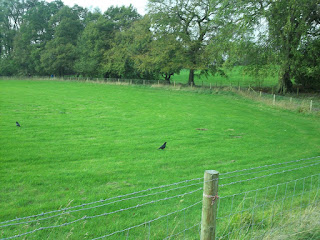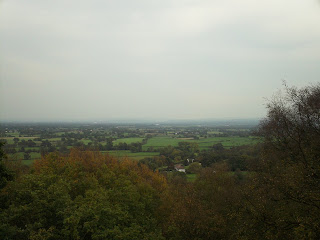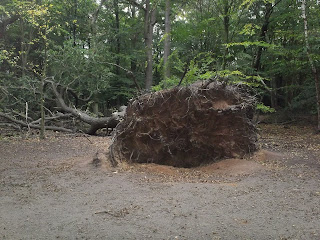The Saatchi Bill:
Deregulating Drug Safety Testing by Stealth
What is
the purpose of the Saatchi Bill? That may seem an odd question: the full name
of the Bill is ‘the Medical Innovation Bill’ and that is what is usually put
forward as its purpose, other than in more hyperbolic PR flourishes when it is
occasionally represented as ‘a Bill to cure cancer’.
But
there has been expert evidence aplenty that doctors are not prevented by
innovating by the law at present – to give just one example here’s the head of
professional standards at the Medical defence Union http://www.bmj.com/content/350/bmj.h531/rr . If people who really do know
say the Bill is not needed why does its sponsor, Lord Saatchi, plough on with
the Bill virtually unchanged? It could be down to his personality, as argued
here http://www.statsguy.co.uk/the-saatchi-bill/. That piece is both well
researched and well argued, but I disagree with the conclusion.
A more
honest title for the Bill would be ‘the Deregulation of Medical Safety Testing
Bill’. I’m quite prepared to believe that Lord Saatchi is acting partly from
altruistic motives (though it would be foolish to dismiss too lightly the
evidence he does stand to make a significant profit personally. See https://opendemocracy.net/ourkingdom/anne-williams/maurice-saatchi-his-medical-innovation-bill-and-booming-%E2%80%98orphan-drugs%E2%80%99-mark#.VMKgBPMucv8.twitter). If Maurice Saatchi is a free market
fundamentalist, who genuinely believes that ‘the magic of the market’ will
solve any problem it follows that any regulation – even testing medical drugs
for safety before they can be prescribed – is holding back progress.
It is
entirely possible that during his wife’s illness Lord Saatchi asked his
contacts in the pharmaceutical industry why more could not be done and was told
“we have lots of drugs sitting on the shelf which might be effective, but we
can’t use them because it’s such a long and expensive business to get them
tested and authorised for use.” Rather than get into the complex detail of how
drugs are tested he hit upon a Gordian knot type of solution: if doctors could
use untested drugs without any penalty if it went wrong they would use then
even if they had not been tested.
Had the
proposal been phrased as ‘let’s allow doctors to use untested drugs without any
repercussions if they harm patients’ it would have been dismissed as ”mad” (as
my GP said when I put this idea to her). Thalidomide would have been mentioned.
Interestingly
the Saatchi Bill is far from alone. Across the USA various ‘Right To Try’ laws
have been proposed, often sold as ‘Dallas Buyers Club’ laws. As Science Based
Medicine notes http://www.sciencebasedmedicine.org/the-illusions-of-right-to-try-laws/ movies are not usually sound
reasons to write laws. The US Food and Drugs Administration has long been a bête noire of the US far right and it is
no great surprise that the Goldwater Institute has thrown itself behind these
efforts, even helpfully drafting legislation for states to enact.
When the
UK Saatchi Bill PR office started using #righttotry as a Twitter hashtag any
doubt that the two campaigns were not related evaporated. No matter how queasy
some of the efforts of the Saatchi Bill’s ‘media partner’, the Daily Telegraph
might make one at least we’ve been spared five year old Jordan http://www.wthr.com/story/28029775/5-year-old-lobbies-lawmakers-for-right-to-try-bill so far.
But the
reality of the Saatchi Bill is far more radical than anything the Goldwater
Institute have dared to try. US ‘Right to Try’ laws have been restricted to terminally
ill patients. While the Saatchi Bill PR team have insisted that their Bill is
primarily about terminal patients (see http://medicalinnovationbill.co.uk/about-the-medical-innovation-bill/ brilliantly corrected here https://wanderingteacake.wordpress.com/the-saatchi-bill-2/how-saatchi-actually-work/ ) and have managed to shift
almost all discussion to being about terminally ill patients the reality is,
and it is admitted in small print, it applies to all patients, all doctors, all
conditions.
So PR
has shifted most of the discussion around this Bill to become, “if I was
terminally ill would shouldn't I be allowed to try an untested drug? Er, because
you might die in agony? And not ‘what if a patient goes to a doctor, is
promised “innovative treatment” which will cure an ingrown toenail, loses a leg
and then finds they can’t sue?’
A great
deal of effort has gone into pointing out that the Saatchi Bill would open the
door for quackery: perhaps rather than an unintended consequence of the Bill it
is part of the deliberate plan. The supporters of alternative medicine are a noisy
bunch, always willing to sign petitions and lobby MPs so winning their support
would help the Bill – and there is a certain irony in fans of alternative
medicine lobbying frantically for Big Pharma’s right to harm patients with
untested drugs and face no consequences. The free market fundamentalists are
keen on the ‘consumerisation’ of health. There’s big money to be made in
supplements, vitamin pills and assorted quackery so caveat emptor and the ‘magic of the market’ will decide, not
doctors and regulators, and Big Pharma will rake in the profits, especially
with astroturfed “patient groups” demanding untested drugs at astronomic prices.
“Capitalism can save lives” http://www.telegraph.co.uk/news/general-election-2015/11398870/Ed-Miliband-will-never-understand-that-capitalism-can-cure-cancer.html declares the Saatchi Bill’s
media partner today in a typical headline.
The
advocates of the Saatchi Bill claim it will stimulate medical innovation
despite the fact that the overwhelming body of expert opinion is that fear of
litigation does not currently inhibit progress. No substantial changes have been
made to the Bill to accommodate legitimate criticism. What this suggests to me
is that while promoting medical innovation is the stated purpose of the Bill the
real intention is to create a free market in health, where the quack can
compete on level terms with the expert oncologist and untested drugs can be
used on all patients with them having no redress if they are maimed or killed. The
Saatchi Bill is a fundamental challenge to evidence-based medicine, proposing
instead a free market free for all where profit is all and patient safety ignored.







































